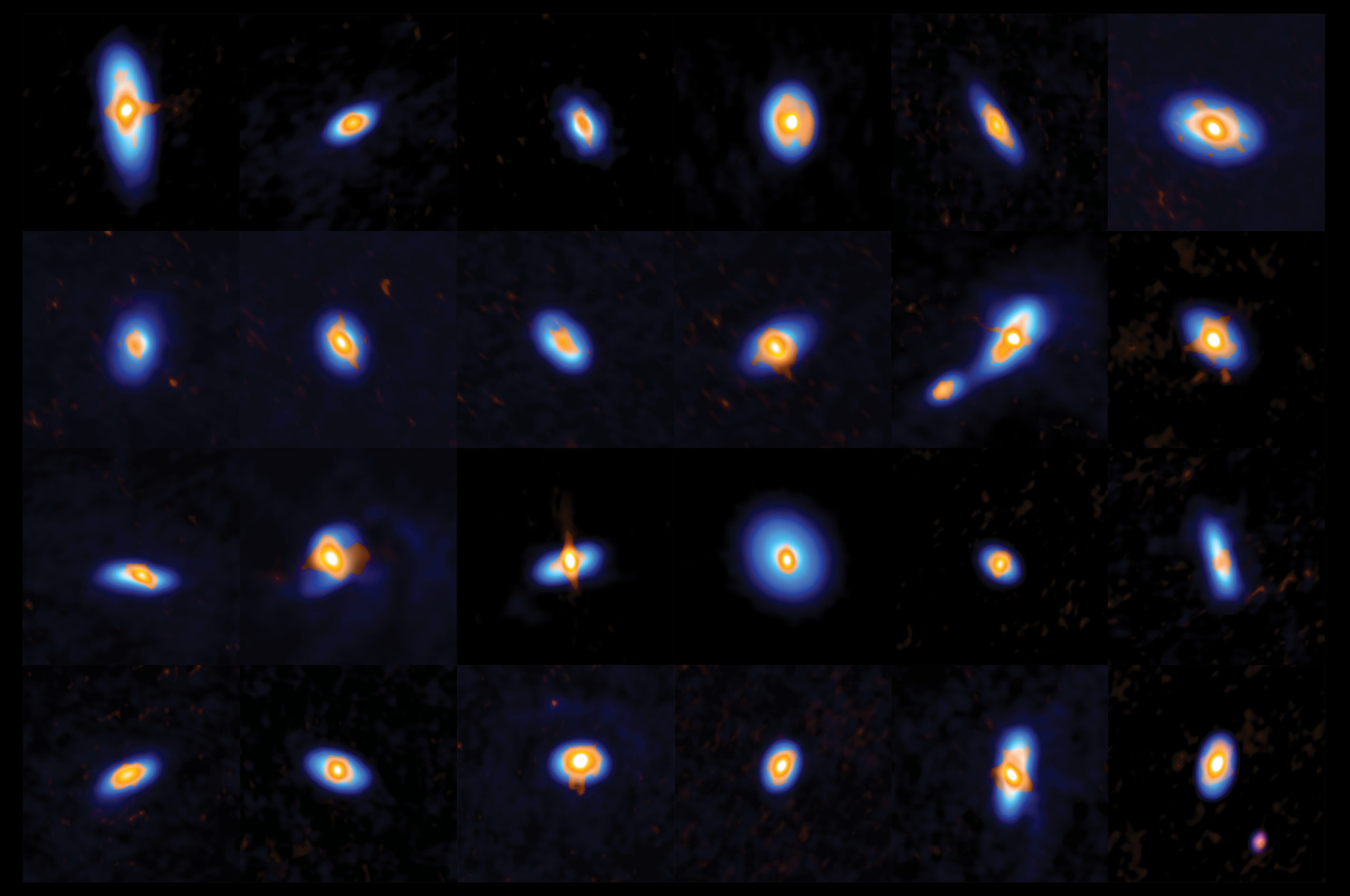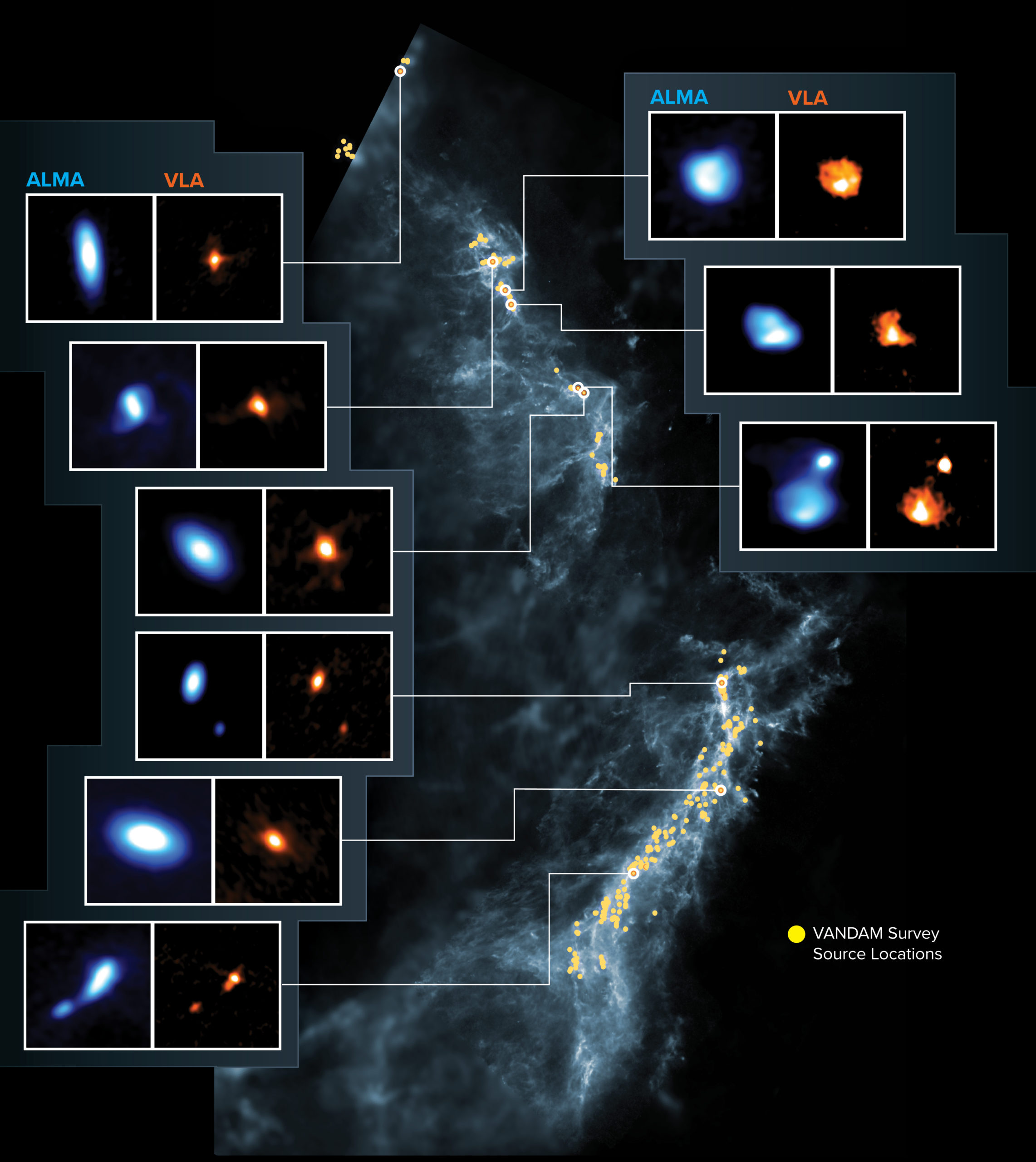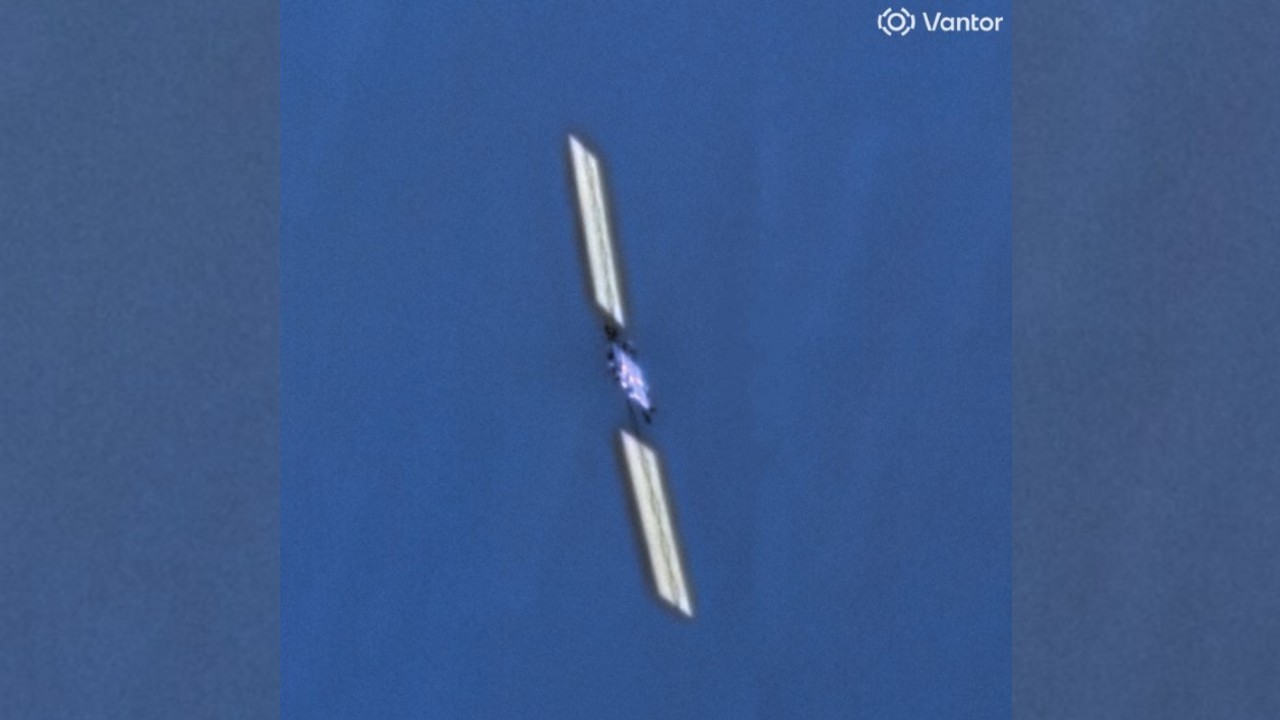Astronomers spot hundreds of baby stars and planet-forming disks

Astronomers have imaged more than 300 newborn stars, revealing new clues about the early stages of star formation and the birth of planets.
In the new research, astronomers using the Karl G. Jansky Very Large Array (VLA) and the Atacama Large Millimeter/submillimeter Array (ALMA) studied hundreds of young stars surrounded by rings of dust and gas. These stellar infants lie in a dense star-forming region known as the Orion Molecular Cloud Complex.
The ring of dust and gas surrounding a young star, also known as a protoplanetary disk, supports the birth of new planets. Using the VLA and ALMA telescopes, the astronomers could peer through the dense clouds of dust and gas in the Orion Complex to see the protoplanetary disks forming around the infant stars, according to a statement from the National Radio Astronomy Observatory (NRAO).
Related: Gallery: The strangest alien planets
"This survey revealed the average mass and size of these very young protoplanetary disks," John Tobin, who led the survey team from the NRAO, said in the statement. "We can now compare them to older disks that have been studied intensively with ALMA as well."
The survey, called the VLA/ALMA Nascent Disk and Multiplicity (VANDAM), is the largest study of planet-forming disks around infant stars to date. Using this data, researchers identified young stars and their disks in various stages of formation.
Young stars, also known as protostars, form in dense clouds of gas and dust like the Orion Complex. When such a cloud collapses due to gravity, it forms a disk of material that continues to fuel the growth of a new star.
Breaking space news, the latest updates on rocket launches, skywatching events and more!
In turn, planets form from the leftover material in the disk surrounding the newborn star. The new images show that young protoplanetary disks tend to be more massive than older disks, because stars consume more material from their disk as they grow.
"This means that younger disks have a lot more raw material from which planets could form," Tobin said in the statement. "Possibly, bigger planets already start to form around very young stars."
Four of the young stars captured in the survey stood out from the rest, as they appeared to be "irregular or blobby," the researchers said. The strange shapes suggest that the stars are still in the very early stages of forming, because they do not yet have the flattened, rotating disk surrounding them or the strong outflow of material that are both characteristic of a protostar, the statement said.
"We rarely find more than one such irregular object in one observation," Nicole Karnath, one of the survey team members from the Stratospheric Observatory for Infrared Astronomy (SOFIA) Science Center, said in the statement. "We are not entirely sure how old they are, but they are probably younger than 10,000 years."
For an infant star, developing an outflow not only clears the surrounding dense cloud of material that would otherwise obscure it from view, but also prevents the star from spinning out of control as it grows.
However, little is known about how these outflows form. One of the four "irregular" stars surveyed, called HOPS 404, has one of the smallest outflows ever seen, shedding light on the earliest stages of star formation.
"It is a big, puffy sun that is still gathering a lot of mass but just started its outflow to lose angular momentum to be able to keep growing," Karnath said in the statement.
The findings contributed to two studies published Feb. 20 in The Astrophysical Journal.
- How to tell star types apart (infographic)
- Top 10 star mysteries of all time
- 15 unforgettable images of stars
Follow Samantha Mathewson @Sam_Ashley13. Follow us on Twitter @Spacedotcom and on Facebook.
OFFER: Save at least 56% with our latest magazine deal!
All About Space magazine takes you on an awe-inspiring journey through our solar system and beyond, from the amazing technology and spacecraft that enables humanity to venture into orbit, to the complexities of space science.

Samantha Mathewson joined Space.com as an intern in the summer of 2016. She received a B.A. in Journalism and Environmental Science at the University of New Haven, in Connecticut. Previously, her work has been published in Nature World News. When not writing or reading about science, Samantha enjoys traveling to new places and taking photos! You can follow her on Twitter @Sam_Ashley13.


